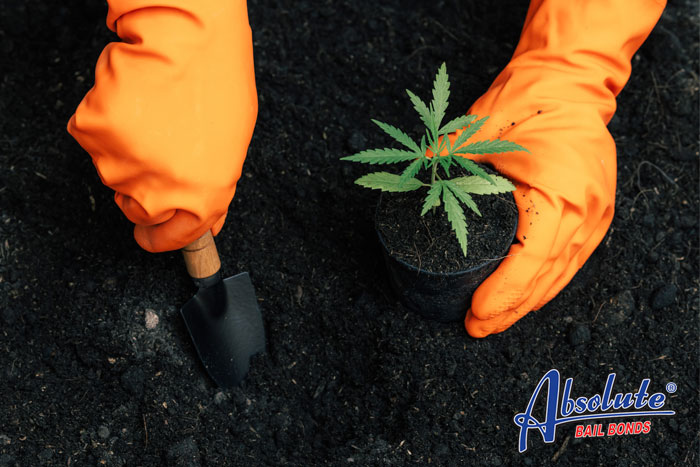
Will Your California Driver’s License Automatically Be Suspended After a DUI?
Getting a DUI is a traumatic event. One of the hardest things is that it impacts your life for a long time. For most people, the biggest challenge is losing their driving privileges. Many people assume that as soon as they’re convicted of a DUI they will lose their license for several months, but that’s no longer the case. Traditionally, a first-time DUI conviction resulted in a 6-10 month license suspension.
Yes, many people in California do have their license suspended following a DUI arrest, but some don’t realize that there is another option.
Few people know that it’s the California DMV, not the sitting judge, who determines what your driving privileges are following a DUI. Many people are surprised to learn that there will also be a DUI hearing that’s conducted by the DMV and it is during this hearing that post-DUI driving privileges are discussed.
The purpose of the DUI hearing is to decide what should be done with your driver’s license. One of the interesting things about current DUI DMV hearings is that the panel doesn’t always instantly order a license suspension. Starting in 2019, the DMV ruled that some drivers who were dealing with their first DUI charge would be allowed to continue driving, with restrictions, provided they were willing to have an ignition interlock device fitted to their vehicle. The reason for this decision is so that the person doesn’t have to worry about losing their job because they can’t get to work without a license. The other advantage of not automatically suspending a license was that it enabled parents to continue transporting their children to school and other activities. Currently, the DMV installs the IID on cars for about four months in first-time DUI cases. Second/third-time offenders will usually have to deal with the IID for one to two years.
To ask for the IID rather than a full license suspension, you have to contact the DMV and request a hearing. This request has to be placed within 10 days of your DUI arrest. Failing to do so will result in the automatic suspension of your license.
If you miss the 10-day window, the DMV will suspend your license and let you know how long the suspension will be in place.
The process of getting your license reinstated will involve:
- Completing California’s DUI school
- Providing the DMV with an SR-22 Insurance form
- Paying a $125 reinstatement fee
All things considered, it really is in your best interest to contact the DMV shortly after you’ve been arrested for a DUI and booking a formal hearing.

Safety Tips for College Students
It’s the time of year when many young adults are preparing for their first semester of college. In most cases, this is the first time they have lived without the supervision and guidance of their parents. One of the things collegebound students should already be reviewing is how they can make sure that they have fun and manage to stay safe during their freshman year.
Always Be Mindful of Your Safety
The great thing about living in a dorm is that the close living quarters means forming a tight bond with many of the people living on your floor. The downside to living in a dorm is that the sense of family and friendship can cause you to become lax when it comes to your safety. The biggest problem many students encounter while living in the dorm is that they become so comfortable that they start neglecting to lock their doors.
From day one, get into the habit of locking your door and double-checking the lock each time you enter and leave your dorm room.
Establish the Buddy System
While staying in your dorm and only going to classes will keep you safe, it’s not much fun. Rather than locking yourself away, get into the habit of creating a buddy program when you go out. Make a deal with a few different friends that no one goes home without the others and to keep an eye on one another the entire time you’re out and having a good time.
Keep Your Phone Charged
Each time you leave your dorm room make sure your phone is fully charged and that it’s easily accessible. It’s your first line of defense if you get into trouble while you’re out.
Pay Attention to Your Surroundings
When you’re out and about, pay attention to your surroundings. Stay in brightly lit areas. Stick to areas that are populated and heavily patrolled by campus security. Keep your eyes on the environment rather than on your phone.
Get Your Own Drinks
It doesn’t matter if you’re at a party, relaxing in your own room, or at a local pizza place, always get your own drinks. You should also never leave your drink unattended. If for some reason you do have to walk away from your drink, discard the unfinished portion and get yourself a new one.
Don’t be Afraid to Contact Campus Security
If your friends leave without you, it’s better to contact campus security and have them give you a ride back to your dorm than to try to walk home alone. Remember, that they’re paid to protect you.
Following these safety tips and using common sense provides you with the tools needed to stay safe while also enjoying your first year of college life.
Establish Patterns for Contacting Loved Ones
While you don’t necessarily want to always use the same route for going to classes and parties, you do want to establish good patterns when it comes to checking in with friends and family. Checking in on a specific day of the week and close to the same time each time is a good warning system if something goes wrong. If you don’t check-in, they know that they should contact the authorities and have someone do a physical check on you.

Off-roading in California’s State and National Parks
Off-roading isn’t just a lot of fun, it’s also a great way to see parts of California’s state and national parks you wouldn’t otherwise, get to see. Off-roading provides you with the means to visit more remote areas than the traditional roads take you to, while also allowing you to cover more ground than you would if you were hiking or biking.
While there are many benefits connected to off-roading through California’s state and national parks, going off-road also means you have some additional responsibilities you must adhere to.
Make Sure Your Permit is Current
You’re not allowed to hop into your ATV and start tooling around California’s state and national parks. The only people who are allowed to enjoy off-road adventures are those who have the proper permits.
If you’re going on an off-road adventure in one of California’s state parks, you need to fill out an application with California’s Department of Parks and Recreation. The vehicle you are using must comply with current state environmental codes, and your off-highway vehicle permit must be kept current. The OHV permit is $25 if you’re purchasing a season-long pass. You only have to pay $5 for a day pass.
If you’re not a California resident, you still have to purchase an OHV permit before you can embark on an off-road adventure through the truly stunning state parks. The cost of the permit for non-residents is $30.
Off-Roading in National Parks
Some people make the mistake of thinking that because they got an OHV permit from the state, that they can also go off-roading in California’s national parks. That’s not the case. The National Park Service manages the National Parks and has its own permit. You’ll have to contact the National Park Service to learn about the application process and cost of the off-road permit.
Follow the Rules
Don’t assume that your off-road permit allows you to go anywhere and do whatever you want. That’s not the case at all. The National Park Service in particular is diligent about enforcing rules that pertain to what you can and can’t do while off-roading. Breaking one of the rules could end up costing you a lot of money.
If you’re going off-roading it’s important to find out exactly where you can and can’t go. Most parks have maps and even post the areas where you’re not allowed to take your off-road vehicle.
Simply getting caught off-roading in a section of a National Park, where off-roading is prohibited, is considered a violation of Title 36 of the Code of Federal Regulations. If you’re convicted of the violation, you could be sentenced to as much as 6 months in prison and also fined $5,000. Additional charges that are often added to this violation include violating an endangered
species, littering, wildlife, plants, and natural or cultural features violations, and damaging archeological resources.
Have fun on all of your off-road adventures this summer!

Can You Go to Jail for Online Scams?
If you’re wondering if you can go to jail for instigating an online scam, the answer is yes.
If your wondering if you will go to jail for an online scam you’ve run, the answer isn’t as clear.
The first thing you need to understand is that it doesn’t matter what you’re doing, if you’re using a dishonest method for getting money out of people, you’re running a scam and that is always illegal. It doesn’t matter if you managed to acquire $20 or $20,000, the scam was still illegal. If the police catch on to what you’re doing and have enough evidence, you will be charged.
The types of internet crimes individuals have been charged with in California include:
- Phishing
- Online credit card fraud
- Romance scams
- Ponzi schemes
- Greeting card scams
- Bank loan scams
- Identity theft scams
- Craigslist scams
The amount of money you collected via the online scam will influence whether you’ll go to jail if you’re convicted and also how long you’ll be imprisoned.
If the scam had minimal financial consequences, it’s likely that you’ll be charged with a misdemeanor. While the sentencing could include a year in jail, the judge may decide that you only have to pay a fine or do community service. You could also be placed on probation.
If you acquired a larger sum of money, it’s likely you’ll be charged with a felony. In that case the likelihood of you being sent to jail increases. If you’re convicted, the consequences could include being sentenced to time in a state prison, massive fines, and felony probation. The number of victims involved in the scam as well as your criminal history can also play a huge role in how much time you spend in jail as a result of internet crimes.
A stint in jail will likely be only one of the hardships you face following a guilty conviction for perpetrating an online scam. It’s likely that your victims will decide to file civil suits against you as well.

Criminal Trespassing in California
When you read through California Penal Code Section 602 you’ll learn that it’s illegal to come onto someone’s property without the owner’s permission. While this doesn’t mean you’ll face criminal charges each time you have to use someone’s driveway to turn around or when you stop in at a neighbor’s home to inquire about a lost pet, it does give the property owner the right to tell you that you’re not welcome on the property.
The other thing to keep in mind is that if you’re on someone else’s property and they request that you leave, failing to do so right away gives the property owner the right to call the police and file trespassing charges against you.
Refusing to leave a hotel or restaurant is another way trespassing charges can be filed against you.
Don’t assume that just because a person’s property is a business, that you can’t potentially be charged with trespassing. There have been cases of people who have gotten into a dispute with business owners/employees/other customers being arrested for trespassing after they entered the business and did things like harass people or refused to leave.
The majority of the trespassing cases that make their way through the California court system or considered misdemeanors. The maximum sentence for a guilty conviction is six months in a county jail and/or a $1,000 fine.
It’s important to understand that it’s not uncommon for trespassing to be added to a list of additional charges that can include violating a personal protection order, property damage, assault, etc. When a judge looks at the additional charges they could decide to hand out a maximum sentence. If the trespassing charges look relatively minor and nothing indicates that you’re a habitual offender, the sentence could be minimal.
Aggravated Trespassing in California
Aggravated trespassing is an exception to the idea that all California trespassing cases are misdemeanors. Aggravated trespassing in California is one of California’s wobbler crimes.
According to Penal Code Section 602, aggravated trespassing in California takes place when a trespasser, “makes a credible threat to cause serious bodily injury to someone else with intent to place them in reasonable fear of their own safety or safety of their family, and who within 30 days of the threat, unlawfully enters their residence, property, or workplace with the intent to carry out the threat.”
If you’re convicted of felony aggravated trespassing, the sentence could include 16-21 months in prison, felony probation, and a $10,000 fine.

California Stalking Laws
In California, you can be convicted of stalking even if you have never engaged in actively pursuing a victim as they went about their daily activities. It’s even possible to be found guilty of California’s stalking laws if you’ve never had a face-to-face encounter with the victim. The reason for this is because California lawmakers have written the state’s stalking laws in such a way that they encompass a variety of acts that include harassment, even if that harassment only takes place in the form of letters, social media posts, or phone calls.
The issue of stalking in California is addressed in Penal Code 646.9 PC. The laws states, “Any person who willfully, maliciously, and repeatedly follows or willfully and maliciously harasses another person and who makes a credible threat with the intent to place that person in reasonable fear for his or her safety, or the safety of his or her immediate family is guilty of the crime of stalking.”
The interesting thing about California’s stalking laws is that contacting someone via social media posts, making phone calls, and following them around isn’t always considered stalking. While these things may result in a police report getting filed, to convict you of stalking, the prosecution must prove that your actions/words threatened the victim so that they feared for either their life or their safety.
One of the interesting things about California’s stalking laws is that they are wobbler offenses. That means you could be charged with misdemeanor or felony stalking. There have even been instances where a person was charged with both misdemeanor and felony stalking. The bulk of stalking convictions in California are misdemeanors.
If you’re convicted of one count of misdemeanor stalking in California, the judge can sentence you to a full year in county jail, fine you up to $1,000, and misdemeanor probation. If convicted of felony stalking, your sentence can include up to five years in a state prison, felony probation, and a fine.
While stalking charges involve threatening a victim, if that victim is hurt as a result of your actions, you’ll likely be charged with assault and intimidation in addition to stalking.
Criminal charges could represent one of the problems you face following a California stalking case. Many stalking victims also decide to file a civil case against their stalker. The purpose of the civil case is to gain financial compensation for the mental anguish they suffered as a result of the stalking episode.

California’s Drug Cultivation Laws
Drug cultivation in California is addressed in Health and Safety Code 11379.6HS. The code clearly states that, “every person who manufactures, compounds, converts, produces, derives, processes, or prepares, either directly or indirectly by chemical extraction or independently by means of chemical synthesis, any controlled substance specified in Section 11054, 11055, 11056, 11057, or 11058 shall be punished.”
Getting caught manufacturing, growing, or otherwise producing prohibited drugs in the state could result in a sentence that includes 3-7 years in a state prison and a fine as large as $50,000.
In many cases, manufacturing a controlled substance represents only one of the things you’ll be charged with. There are usually several charges filed at once.
Additional charges generally include:
- Possession
- Possession with intent to sell
- Possession of drug paraphernalia
- Transportation of drugs
If the police suspect you of manufacturing or dealing with a controlled substance in California, the last thing you want to do is make the situation worse. It’s in your best interest to cooperate with the police as much as you can, which includes not doing something like trying to resist arrest. The challenge is cooperating with the police but also not saying anything that could potentially incriminate you, which is why you should contact an experienced criminal defense attorney who has a strong background in cases that involve the manufacturing of controlled substances in California.
Drug cultivation laws involving marijuana can still be a bit confusing to some people. Many mistakenly believed that since marijuana is now a legal recreational drug in California, there are no drug cultivation laws involving marijuana. That’s not the case. At this point, the average person can only legally care for a maximum of six marijuana plants at a time. Only individuals who are over 21 can use it, and you can only legally carry 28.5 grams. Some cities have ordinances that prohibit cultivating marijuana outdoors, though you’re still legally able to do so in the comfort of your own home.

The Dangers of Distracted Driving in California
Everyone always talks about how horrible drunk driving is but far less is mentioned about the dangers and repercussions of distracted driving, which is as dangerous and even more common than drunk driving.
Distracted driving in California isn’t a new thing. For as long as people have been getting behind the wheel of automobiles, there have been distracted drivers.
Examples of distracted driving include:
- Daydreaming
- Arguing with passengers
- Rubbernecking
- Trying to pick up a candy bar you’ve dropped
- Changing radio stations
- Using your cell phone
Distracted driving can result in a number of things going wrong. A single second of distracted driving can result in:
- Weaving in and out of your lane
- Striking another car/pedestrian
- Missing a road sign
- Running a red light
Over the past twenty years or so, distracted driving has become a much bigger problem. Data collected by the National Highway Traffic Safety Association indicates that distracted driving results in approximately 1,000 injuries every single day and approximately 9 deaths a day. Many of these distracted driving accidents involved a cell phone.
In California, when someone is pulled over for distracted driving and issued a citation, the ticket usually doesn’t say distracted driving, even though that’s usually the cause of the incident. The ticket usually states the effect. For example, if you were playing with your dog who was in the shotgun seat and run a red light, the ticket will likely state reckless driving or failure to yield rather than distracted driving.
If your distracted driving results in an injury or death to another person, the citation may be the least of your worries. When someone is hurt or killed as a result of a distracted driving episode, you could find yourself acting as the defendant in a civil case.
In an effort to lower the number of distracted driving incidents in California, the state has introduced the Just Drive campaign. The idea of the Just Drive campaign is to educate/remind drivers about the dangers of using a cell phone while you’re behind the wheel. Everybody involved in the campaign hopes that the program will remind drivers about how deadly answering a single text or taking a long call can be.
California’s “Just Drive” campaign is quite similar to earlier efforts to reduce the number of drivers who use their cell phones while they’re behind the wheel, but this campaign is geared specifically towards younger drivers who are between the ages of 16 and 24.
In California, you’re not allowed to have your cell phone in your hand while you’re driving. While everyone would prefer it if you simply didn’t use your cell phone at all during your commute, you are allowed to use it provided it’s set to hands-free mode, mounted on your dash or windshield, and can be turned on and off by a single finger touch.
The best way to avoid being the cause of a distracted driving incident is to keep your eyes and mind on the road.

Safe Hiking Tips for California’s Trails
California has some of the most beautiful hiking trails in the world. The summertime provides you with the perfect excuse to hit those trails and enjoy some high-quality hikes. Before you do, make sure you take a few minutes to consider your safety.
Be Realistic About Your Fitness
Let’s face it. Most of us aren’t as in shape as we’d like to be. Overdoing it and getting exhausted while on one of California’s hiking trails differs from getting too tired while working out at the gym. It’s far more dangerous. When hiking it’s better to underestimate your stamina and fitness than to overestimate it.
Don’t assume that being out of shape means you shouldn’t go hiking, it just means you need to do a little more planning. Consider both the length of the hike, if there are places to sit, how shaded the trail is, if the terrain is rough or smooth, and the site’s overall elevation before starting your hike. Make sure you’re going to have enough energy to return to your car.
Bring Water
You’re going to get hot quickly. The heat and exertion increase the odds of your dehydrating so make sure you have plenty of water in your pack. Frequently take small sips, even if you don’t think you’re thirsty. Dehydration is something that sometimes catches people by surprise.
Pack a First Aid Kit
When you’re putting together your hiking pack, make sure there is a small, well-stocked first aid kit tucked into it. The first aid kit should include some topical antibiotics, band-aids, and a wrap.
Be Aware of Your Surroundings
While you’re hiking, keep your head up and your eyes off your phone. You need to be aware of your surroundings. Know what people are around you, be ready for wildlife and dogs that are off-leash. Don’t forget to pay attention to any stinging insects.
Let Someone Know Where you Are
Even though you might prefer hiking by yourself, you should at least make sure someone knows what trails you’re going to be on and when you intend to be done hiking. Letting someone in on your itinerary helps them know if you don’t return on time and helps them direct people to the area where they should start looking for you.
Don’t assume that just because all of your past hikes have been successful that you won’t get lost or hurt on your next one.
When it comes to hiking, you always want to make safety your priority.

Drinking on California’s Beaches
Summer is finally here. For many of us, that means long, lazy weekends and evenings at our favorite beaches. We can’t get enough sun, sand, and surf. The big question is, can you bring a cooler full of beer to your favorite California beach?
The answer varies depending on which beach you’re going to.
If you’re in San Diego, the answer is no. The beaches have a strict, no-alcohol policy. Many state park beaches also prohibit alcohol, though some will allow you to pop a top.
The California state beaches where you can drink are:
- Carmel Beach, Monterey County
- Descanso Beach Club
- Doheny State Beach, Orange County
- Point Reyes National Seashore, Marin County
- Paradise Cove, Malibu, Los Angeles County
If you are going to one of those beaches and plan on bringing your favorite alcoholic beverages along, double-check the beach rules. Some have specific times when alcohol is prohibited.
Even on beaches where alcohol is allowed, you need to use extreme caution and make sure you don’t overindulge. If you get drunk and the police come by, you could be charged with public intoxication or even disturbing the peace.
You also need to be mindful of how much you drink before you go swimming, diving, or surfing. Getting into the water after you have been drinking slows your reflexes and dulls your judgment, increasing the likelihood of you getting hurt and drowning. The unspoken rule of thumb is that if you plan to go into the water at all, you should do so before you start drinking.
You should also expect the police to be patrolling the roads that lead to and from the beach, so you’ll want to make sure you’re sober before you slide behind the wheel. Before heading home, make sure that any remaining alcohol is properly stored in your cooler so that you don’t get caught with an open container in the car.
The other thing to keep in mind when you head to the beach is that littering is a crime. In addition to picking up all of your trash, make sure you collect your bottle tops, empty cans, and other alcohol-related paraphernalia before you leave.

